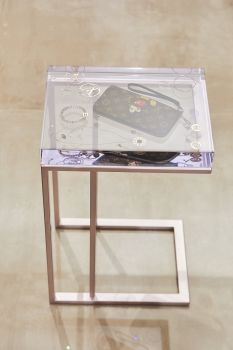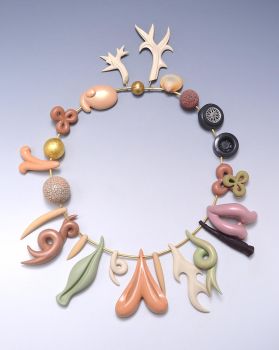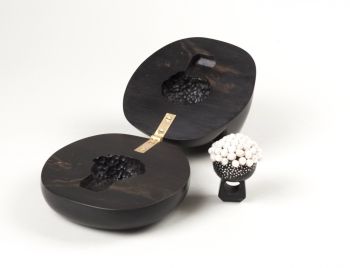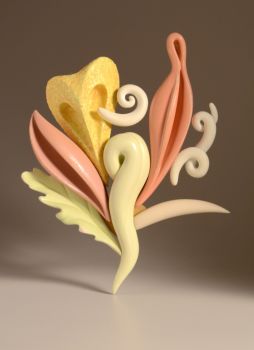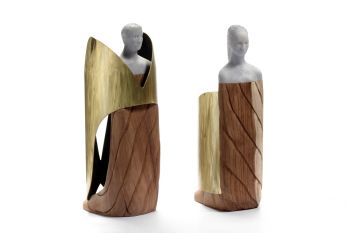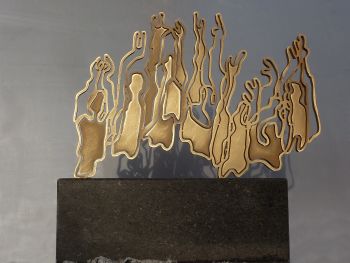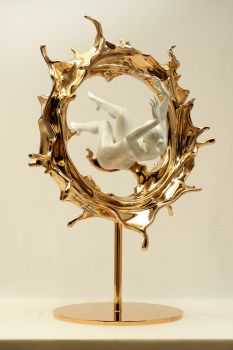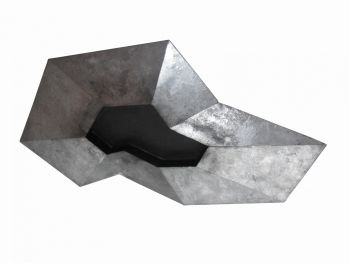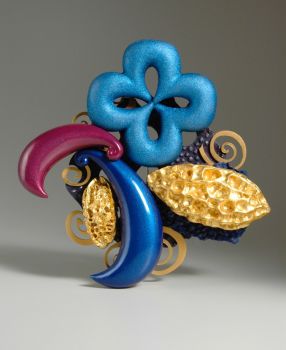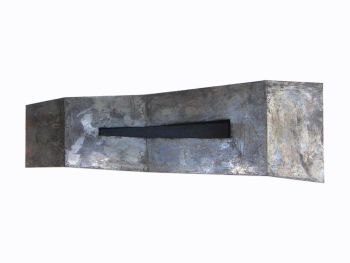Dutch colonial chest, 18th century 1750 - 1800
Unbekannter Künstler
EbenholzHolzMetallBlechbläser
50 ⨯ 91 ⨯ 62 cm
ConditionGood
€ 2.500
Verkoulen Oriental & European Antiques
- Über KunstwerkA compact Dutch colonial storage chest of tropical hardwood on bun feet, late 18th century, around 1750-1800, Indian Ocean area.
Dimensions: 50x91x62 cm.
Indispensable in the interior of the East was a storage or ship's chest. Made out of tropical hardwood they could withstand the humid and warm climate in the colonies. Because East India Company officials or colonial habitants traveled a lot between the colonial island in the archipel and ocean, the need of storage space for personal items were high and chests had to be compact and strong. The chests were not only useful in India but also for the long lasting way back to Europe. It is known that these chest were also sold in Holland to people who had noting to do with the colonies.
This specific chest was probably made in Sri-Lanka, or less likely Batavia (Jakarta). The brass lock plate has beautiful cut motifs, while the fittings on the sides have a strikingly cut-out heart pattern in them. The sides of the top as well as the edges at the bottom have black paint to imitate ebony wood.
Condition: Good, restored ebonising/surface. - Über Künstler
Es kann vorkommen, dass ein Künstler oder Hersteller unbekannt ist.
Bei einigen Werken ist nicht zu bestimmen, von wem sie hergestellt wurden, oder sie wurden von (einer Gruppe von) Handwerkern hergestellt. Beispiele sind Statuen aus der Antike, Möbel, Spiegel oder Signaturen, die nicht klar oder lesbar sind, aber auch einige Werke sind überhaupt nicht signiert.
Außerdem finden Sie folgende Beschreibung:
•"Zugeschrieben …." Ihrer Meinung nach wohl zumindest teilweise ein Werk des Künstlers
•„Atelier von ….“ oder „Werkstatt von“ Ihrer Meinung nach eine Arbeit, die im Atelier oder in der Werkstatt des Künstlers, möglicherweise unter seiner Aufsicht, ausgeführt wurde
•„Kreis von ….“ Ihrer Meinung nach ein Werk aus der Zeit des Künstlers, das seinen Einfluss zeigt, eng mit dem Künstler verbunden, aber nicht unbedingt sein Schüler
•"Art von …." oder „Anhänger von ….“ Ihrer Meinung nach eine Arbeit, die im Stil des Künstlers ausgeführt wurde, aber nicht unbedingt von einem Schüler; kann zeitgenössisch oder fast zeitgenössisch sein
•„Art von ….“ Ihrer Meinung nach ein Werk im Stil des Künstlers, aber späteren Datums
•"Nach …." Ihrer Meinung nach eine Kopie (jegliches Datums) eines Werks des Künstlers
• „Unterzeichnet …“, „Datiert …“. oder „Beschriftet“ Ihrer Meinung nach wurde das Werk vom Künstler signiert/datiert/beschriftet. Das Hinzufügen eines Fragezeichens weist auf einen Zweifel hin
• „Mit Unterschrift …“, „Mit Datum …“, „Mit Aufschrift ….“ oder „Trägt Unterschrift/Datum/Beschriftung“ ihrer Meinung nach die Unterschrift/Datum/Beschriftung von jemand anderem als dem Künstler hinzugefügt wurde
Sind Sie daran interessiert, dieses Kunstwerk zu kaufen?
Artwork details
Related artworks
Unbekannter Künstler
Set of eight gouache drawings1799 - 1801
Preis auf AnfrageRobert Schreuder Antiquair
1 - 4 / 12Unbekannter Künstler
A silver spoon commemorating Juff’ Margareta van Hoorn1656 - 1694
Preis auf AnfrageZebregs & Röell - Fine Art - Antiques
Unbekannter Künstler
A Surinam-themed Amsterdam long-case clock1746 - 1756
Preis auf AnfrageZebregs & Röell - Fine Art - Antiques
 Kuratiert von
Kuratiert vonGallerease Magazine
Unbekannter Künstler
Japanese transition-style lacquer coffer 1640 - 1650
Preis auf AnfrageZebregs & Röell - Fine Art - Antiques
Unbekannter Künstler
EIN UNGEWÖHNLICHES INDONESISCHES SILBERGERICHTlate 17th
Preis auf AnfrageZebregs & Röell - Fine Art - Antiques
Paulus Franciscus Kromjong
Blumen vor Arearea Aka (Freude) von Gauguin '20th century
Preis auf AnfrageZebregs & Röell - Fine Art - Antiques
1 - 4 / 24Unbekannter Künstler
Japanese transition-style lacquer coffer 1640 - 1650
Preis auf AnfrageZebregs & Röell - Fine Art - Antiques
Unbekannter Künstler
A rare Japanese export lacquer medical instrument box1650 - 1700
Preis auf AnfrageZebregs & Röell - Fine Art - Antiques
1 - 4 / 24Firm Erhard & Sohne, Schwäbisch Gmünd
Erhard und Söhne – Jugendstil intarsia klok – 1908 / 19091900 - 1909
Preis auf AnfrageAntiques Emporium
1 - 4 / 24- 1 - 4 / 7
















































